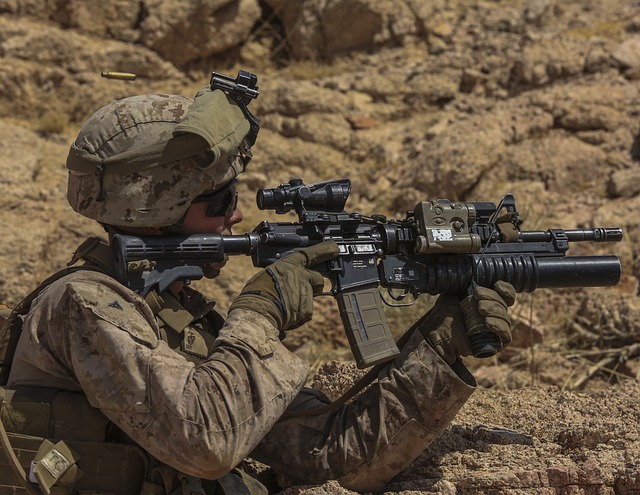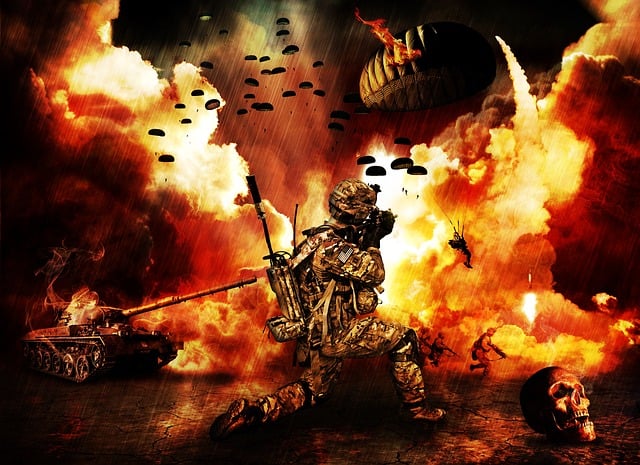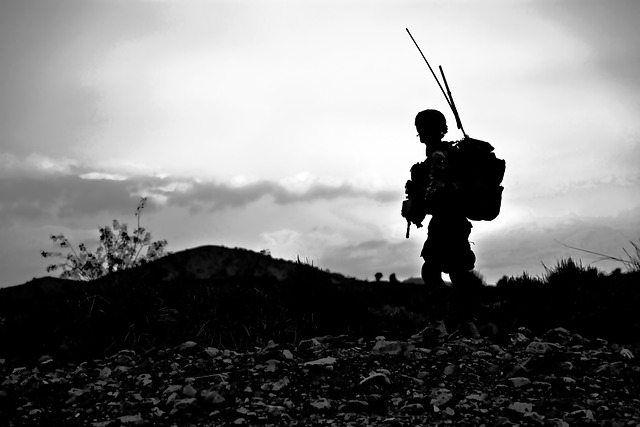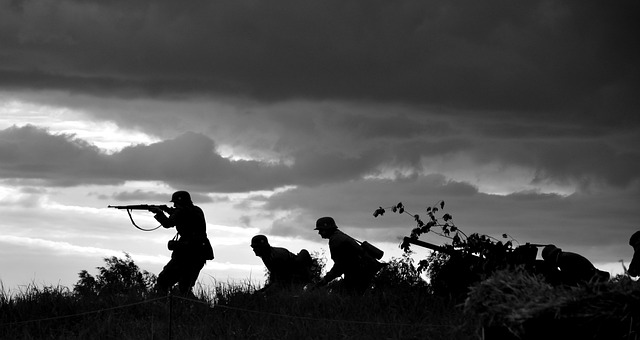
The 101st Airborne Division Flag, colloquially known as the "Screaming Eagle," is a symbol deeply rooted in the history and values of the division, which dates back to its pivotal role during World War II's D-Day invasion at Normandy. It stands for the division's ethos "In Contingency," embodying the indomitable spirit, unwavering resolve, and collective experiences of its soldiers across various global conflicts. The flag represents strength, courage, and loyalty, as seen in the eagle's spread wings, clutched shield, and forward-facing gaze—each element symbolizing robustness, defense, protection, and readiness to face threats head-on. The red, white, and blue color palette reflects the division's connection to the United States and honors the bravery of its members. The interlocking wings signify unity and camaraderie among troops, resonating with broader civilian sectors including law enforcement and sports teams who draw inspiration from it. Beyond military significance, the flag has a cultural impact, appearing in popular media and literature as a symbol of resilience and collective strength, unifying and inspiring across different domains. Its legacy is a testament to the enduring human themes it represents, emphasizing the power of symbols in fostering unity and inspiring action.
The 101st Airborne Division Flag, a potent emblem of strength, courage, and loyalty, has transcended its military origins to become an enduring symbol of resilience. This article explores the rich tapestry of meanings woven into this iconic flag, tracing its legacy from pivotal historical moments to its contemporary influence. Delve into how each element—a fierce eagle clutching a dagger, the unit’s motto “Death from Above,” and the divisional insignia—epitomizes the indomitable spirit that has defined the 101st Airborne Division. Join us as we unravel the layers of symbolism that make this flag not just a banner of military might but a universal call to stand steadfast in the face of adversity.
- The Legacy of the 101st Airborne Division Flag: A Symbol of Strength and Courage
- Unpacking the Emblems: What Strength, Courage, and Loyalty Represent on the Iconic Flag
- Historical Moments: How the Flag Became a Testament to Enduring Loyalty and Resilience
- The Influence of Symbolism in Modern Military and Beyond: Lessons from the 101st Airborne Division Flag
The Legacy of the 101st Airborne Division Flag: A Symbol of Strength and Courage

The 101st Airborne Division Flag, a revered emblem, stands as a testament to the indomitable spirit and unwavering resolve of its namesake unit. This iconic flag, also known as the “Screaming Eagle,” has been a symbol of strength and courage since World War II, when it first saw combat during the D-Day invasion at Normandy. The flag’s journey through history is marked by acts of bravery and resilience, reflecting the division’s motto, “In Contingency.” It represents not just the valor displayed in battlefields across Europe, Asia, and the Middle East but also the unity, camaraderie, and unwavering commitment to duty that define the 101st Airborne Division. Each deployment of the flag into action zones has reinforced its significance as a beacon of hope and fortitude for its bearers, symbolizing the collective strength and courage of all who have served under its iconic insignia. The legacy of this flag is imprinted not only in the annals of military history but also in the hearts of those it has inspired, serving as a tangible reminder of the division’s storied past and the enduring values it embodies.
Unpacking the Emblems: What Strength, Courage, and Loyalty Represent on the Iconic Flag

The iconic flag of the 101st Airborne Division, a symbol deeply ingrained in American military history, encapsulates the essence of strength, courage, and loyalty through its emblems and design. Strength is represented by the eagle’s spread wings, signifying power, resilience, and the capacity to overcome adversity. This avian motif is not merely an emblem but a testament to the division’s formidable presence on the battlefield. The eagle’s grip on the shield it holds underscores the division’s commitment to protect and defend with unwavering tenacity.
Courage, another pillar of the 101st Airborne’s ethos, is illustrated by the eagle’s forward-facing gaze. This depiction conveys vigilance and readiness to confront any challenge head-on. The flag’s color scheme, with its bold red, white, and blue hues, reflects not only national pride but also the valor and bravery that the division’s soldiers have demonstrated in various conflicts since their inception. Loyalty, perhaps the most profound attribute of the 101st, is represented by the interlocking wings of the eagle, symbolizing unity, camaraderie, and a steadfast commitment to one another and to the mission at hand. The flag serves as a daily reminder of the division’s storied past and its unbroken lineage of service and sacrifice, embodying the enduring legacy of the 101st Airborne Division.
Historical Moments: How the Flag Became a Testament to Enduring Loyalty and Resilience

The Influence of Symbolism in Modern Military and Beyond: Lessons from the 101st Airborne Division Flag

The 101st Airborne Division Flag, emblazoned with a spear-wielding angel and the motto “Death from Above,” serves as a potent symbol within the modern military and beyond. This emblematic flag, originally designed for the division’s World War II exploits, encapsulates the core values of strength, courage, and loyalty that are integral to its mission. Its presence on battlefields across different conflicts has imbued troops with a sense of purpose and identity, transcending the purely tactical aspects of warfare by fostering an emotional and psychological connection among servicemen and women. The flag’s symbolism extends into civil society as well, where it represents resilience and steadfastness in the face of adversity. Its imagery and message resonate with various sectors, from law enforcement to sports teams, who adopt the flag as a rallying point for their own values of bravery and unity.
Beyond its military significance, the 101st Airborne Division Flag has become a cultural icon, often referenced in popular media and literature. Its powerful imagery serves as a reminder of the enduring human spirit and the collective strength that can be harnessed when individuals or groups stand together under a shared banner. The flag’s legacy underscores the critical role that symbols play in unifying communities, inspiring action, and conveying ideals that extend well beyond the confines of military service. In this way, the 101st Airborne Division Flag stands as a testament to the universal themes of strength, courage, and loyalty that continue to shape human experiences across various domains.
The enduring legacy of the 101st Airborne Division Flag stands as a poignant reminder of the profound attributes inherent in strength, courage, and loyalty. Its rich symbolism transcends its historical origins, influencing modern military paradigms and beyond. The flag’s journey from a battlefield emblem to an enduring cultural icon underscores the timeless values it represents. As a beacon of resilience and unity, the 101st Airborne Division Flag continues to inspire and serve as a testament to the human spirit’s indomitable nature. Its story is one of endurance, adaptability, and an unwavering commitment to one’s comrades and cause—lessons that resonate far beyond the military.





